Seville is one of the most bike friendly cities in Spain. With over 180km (111 miles) of bike lanes, only Madrid and Barcelona have more. Seville is also a flat city, making exploring Seville by bike an even more appealing idea.
Here is our suggestion for the ultimate bike tour route, which takes in some of the most important landmarks the city has to offer.
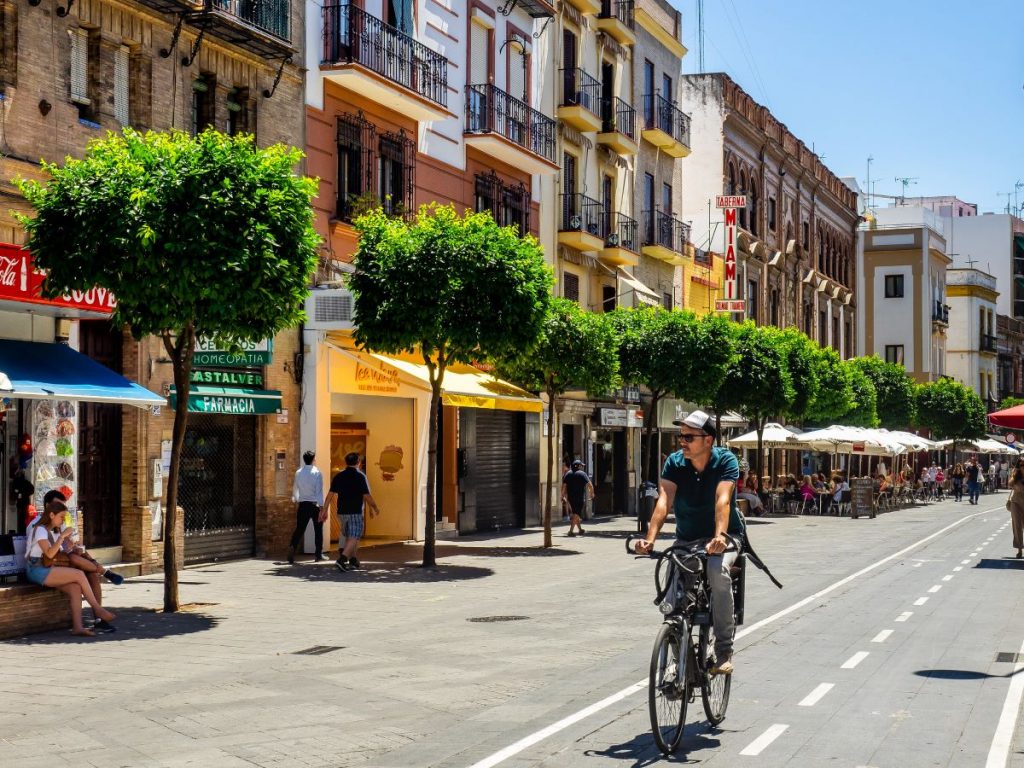
The bike tour is approximately 11.5km (approximately 7 miles), follows the bike lanes where possible, and flows with the direction of traffic once it enters the old town’s winding one way streets. For non-cyclists, it also makes a nice Sevilla walking tour to take in the sights at a more leisurely pace.
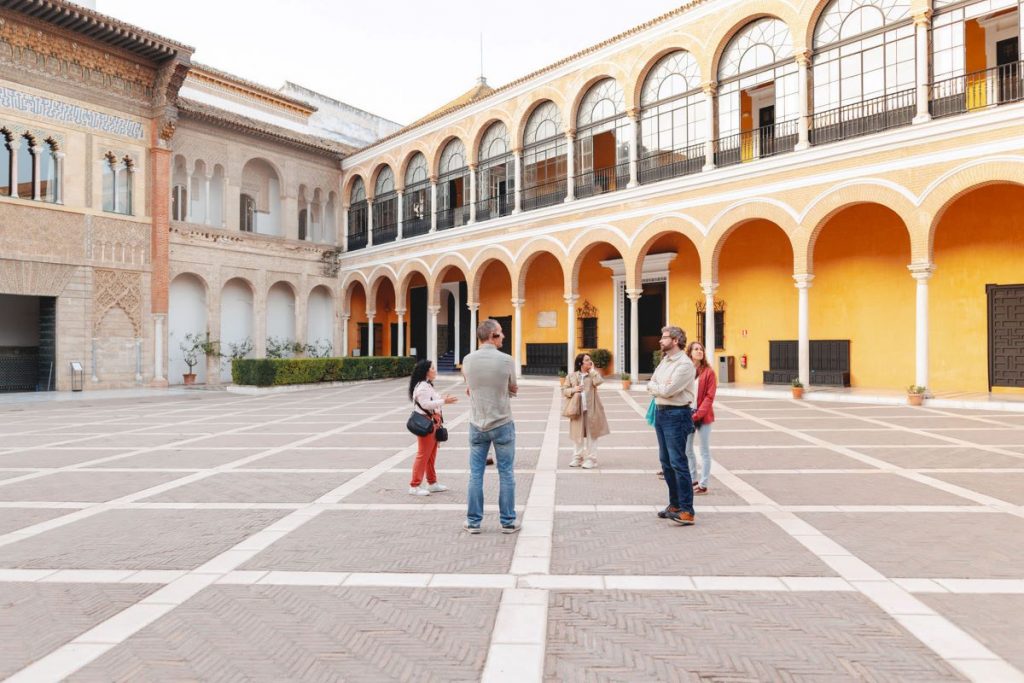
Starting point: Plaza del Altozano
Our starting point is the Plaza del Altozano in Triana, just across the river from Seville. This square serves as the gateway to Triana. With the Triana market on one side and Calle Betis on the other, it is a great spot to meet and then start exploring Seville by bike.
From this plaza, head across Triana bridge (Puente de Isabel II). This ironwork bridge has become a symbol of the city and offers unparalleled views of the waterfront as you enter the city of Seville.
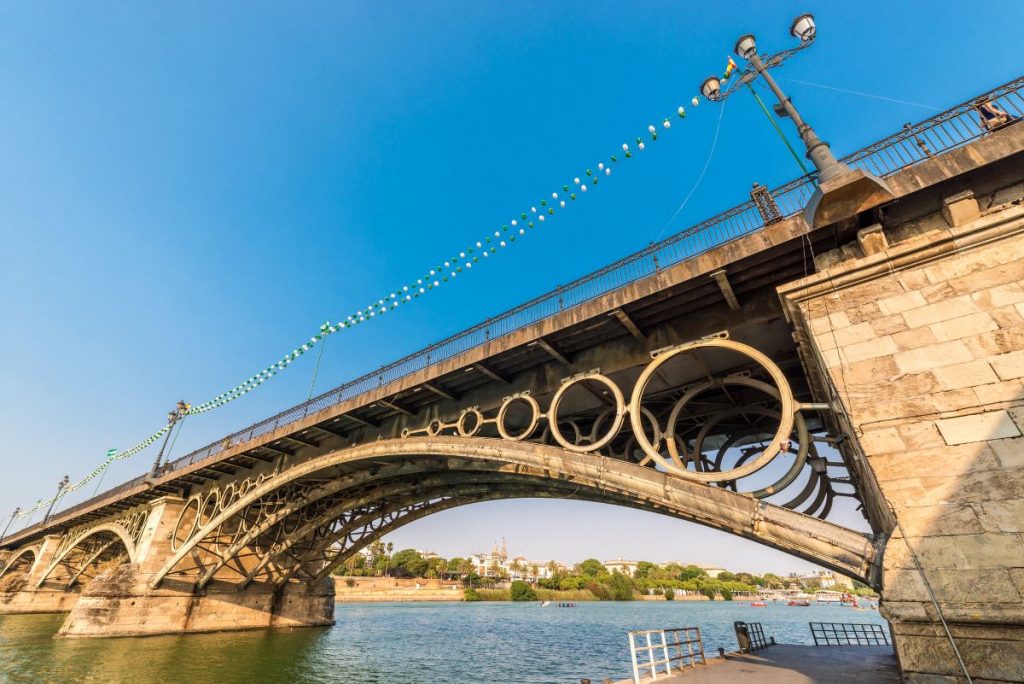
Once we cross the bridge, you have a decision to make. Do you want to cycle by the waterfront, or do you want to cycle at street level and take in some of Seville’s key points of interest? Don´t worry, the two routes will come together further down the river as we head into the city.
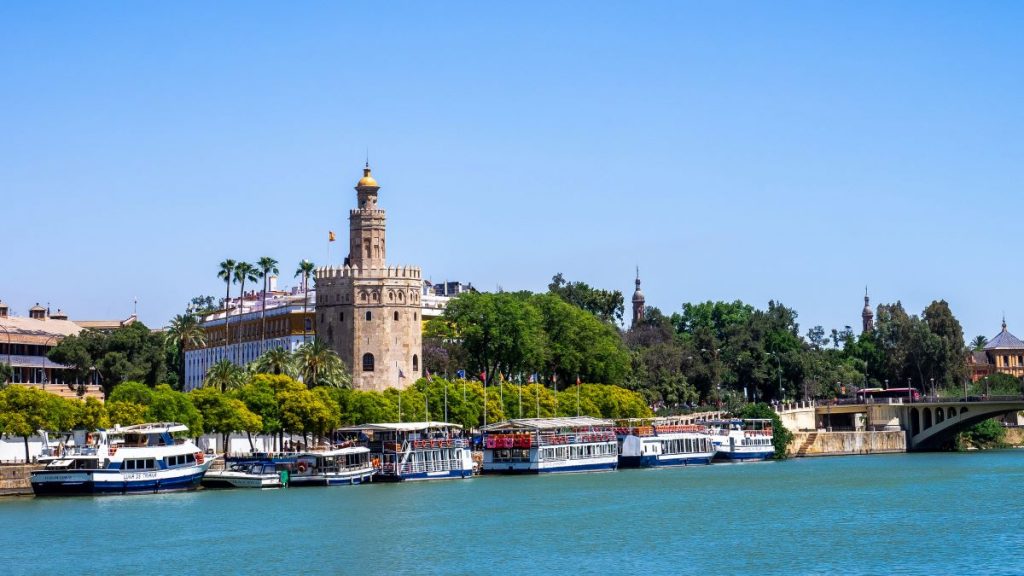
- If you choose the river route, simply turn right once you leave the bridge and follow the bike lane as it heads to the river level. And then, after following the waterfront, you can skip to stop 3 where the two routes converge at Puerta de Jerez.
- If you choose the more city based route, you leave the Triana Bridge, and turn right onto Paseo de Cristóbal Colón to reach stop 1.
Stop 1: Plaza de Toros
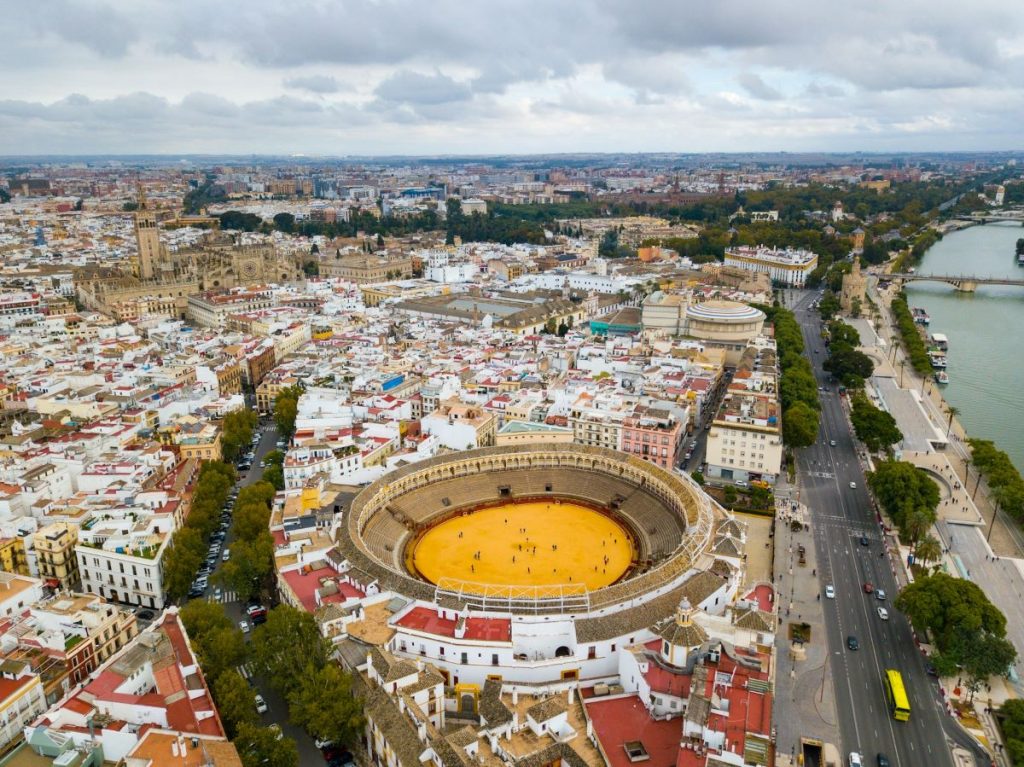
The first landmark we come across is the Real Maestranza. This is the city’s bullring, and is considered the most beautiful in Spain.
Construction started in 1730, and it was originally square, though this was changed to its current shape for safety in 1733. Construction stopped in 1768, when the king at the time, Charles III, outlawed bullfighting. It was finally completed for the first time in 1811, and Aníbal González redesigned it in 1914-15 into the structure you see today.
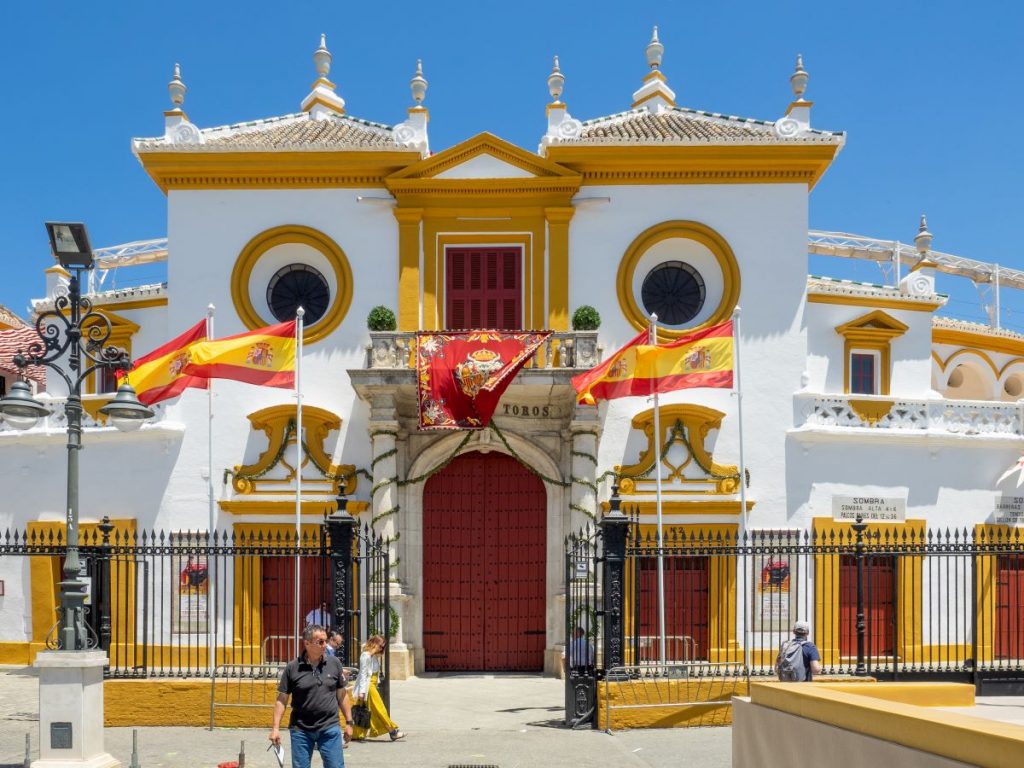
Stop 2: Torre del Oro
Following on from the bullring, continue straight down Paseo de Cristóbal Colón. On the right pass the Teatro de la Maestranza, which is home to the Royal Symphonic Orchestra and serves as the Opera house of Seville. Keep going straight and on the left is the Torre del Oro, the Tower of Gold. This beloved local landmark now houses the Royal Naval museum and the view from the top is simply incredible.
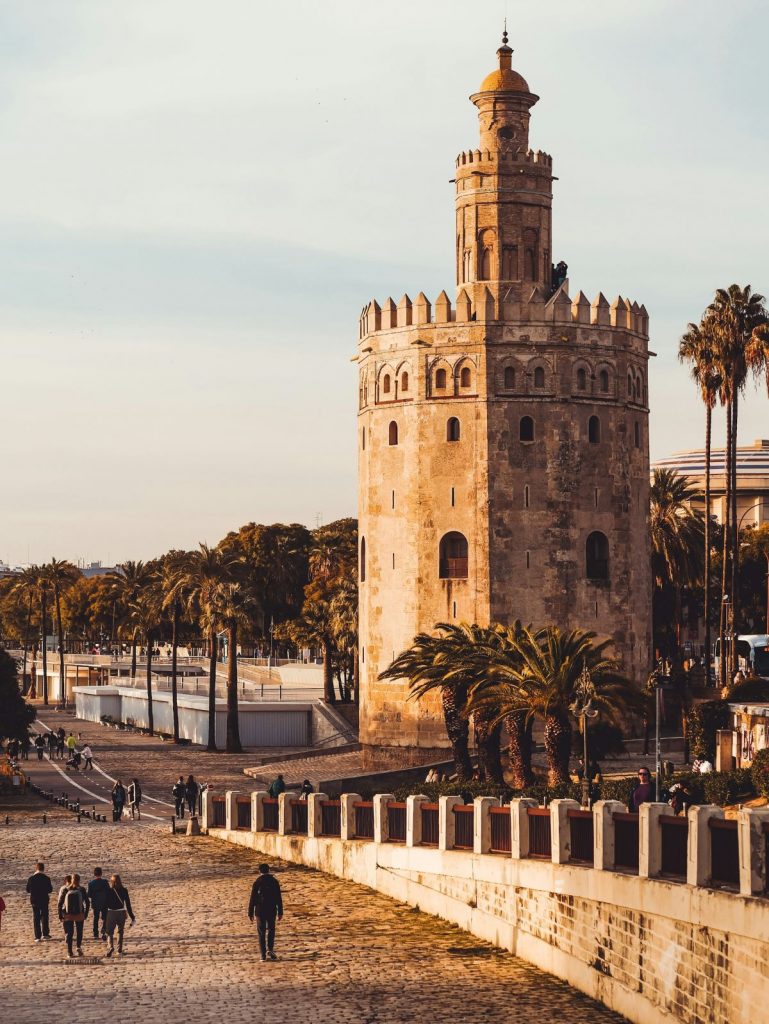
Stop 3: Palacio San Telmo
This is where the two paths converge. If you were on the river route, join back up to road level by Puerta de Jerez. After Puerta de Jerez, the road becomes Paseo de Delicias. Continue on this road, and the Palacio de San Telmo will come into view on your right.
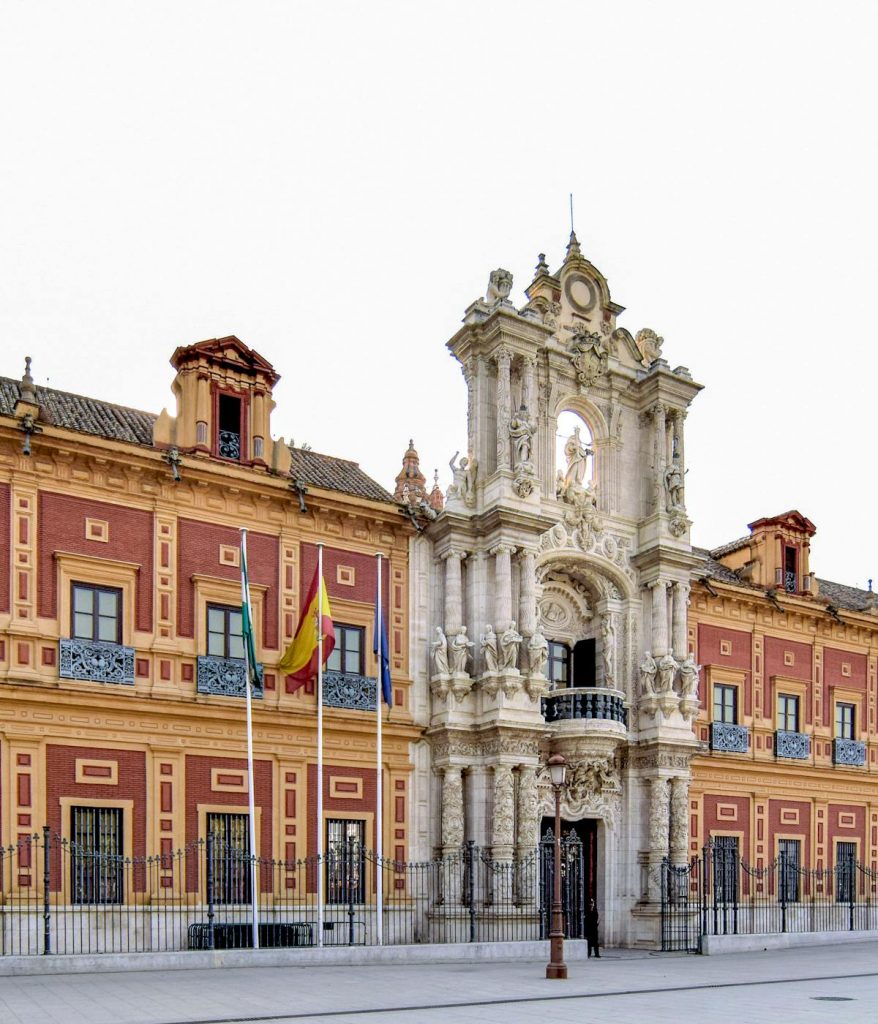
This Palace has been through many iterations in its history. It began as the seminary for the university of seafarers. Next, the residence of a duke and La Infanta Maria Luisa, who the park is named after. It then went back to being a seminary, and finally it returned to palace status in 1992. The chapel inside is one of the “Jewels of Seville”. Visits inside are available but by appointment only.
Stop 4: Parque Maria Luisa / Plaza de España
Next, you will follow the Paseo de las Delicias over the roundabout. On the right you will see the Maria Luisa Park. However, continue, as you will enter it from another entrance. At the Pabellón de México, take a right on Avenida de la Guardia Civil. Then turn onto Avenida de la Borbolla, and finally, turn right onto Avenida de Don Pelayo.
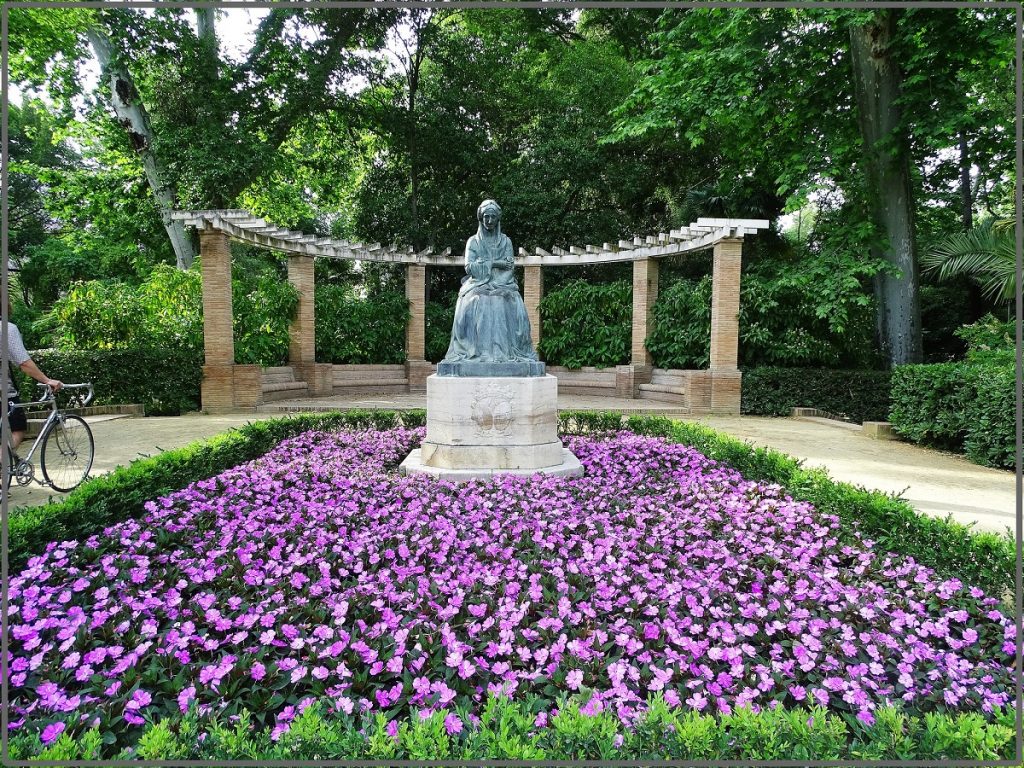
You now find yourself in Parque Maria Luisa, widely considered to be the most beautiful park in Seville. Originally part of the Palacio de San Telmo, with later additions made for the Ibero-American Exhibition. Some of these can be found in the Plaza de América, on the left of where we entered.
These buildings now house the Archeology Museum and the Museum of Arts and Customs. Both are well worth a visit for those interested in history. Go through the park and the magnificent Plaza de España comes into view.
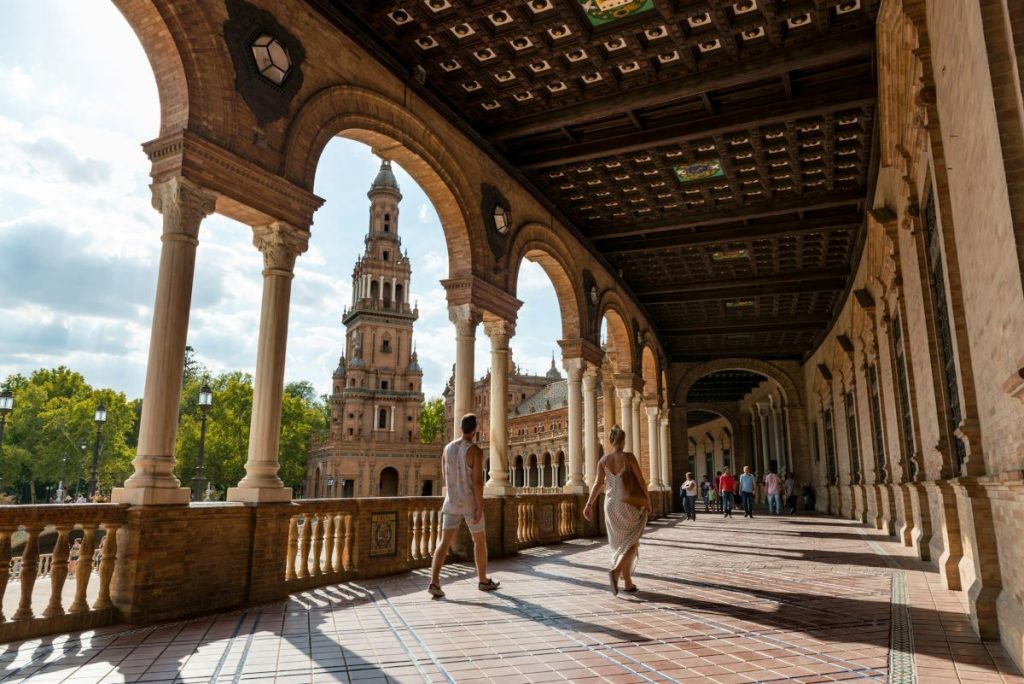
Stop 5: Tobacco factory
Following your time in the scenic park, to continue the tour, you need to head towards Prado de San Sebastián. Go around and turn left at the roundabout to head down Calle San Fernando. On the right you will see the Jardines de Murillo, which offer shady spots on a sunny day, before heading into the Santa Cruz neighborhood.
Go past the gardens and on the left is the old tobacco factory (Calle San Fernando, 4). This stunning building is now a part of the University of Seville and features in Bizet’s opera Carmen.
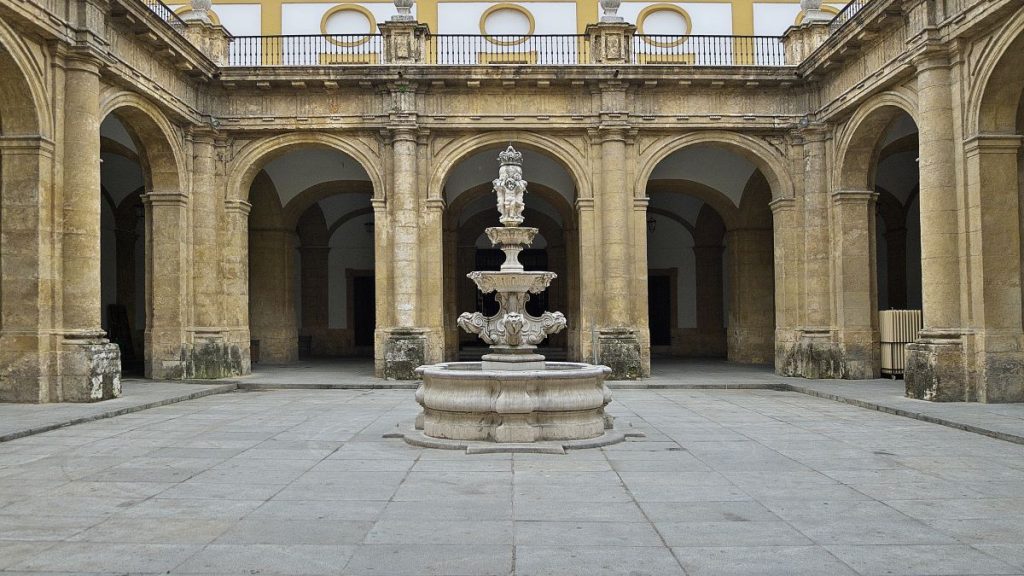
Local´s tip: From Calle San Fernando until Plaza Nueva, you will still be on a cycle path. However, it goes from being green and easy to identify to being marked with raised metal circles which are harder to see.
Stop 6: Plaza del Triunfo
Now, make your way past the Tobacco Factory. On the left there is Hotel Alfonso XIII. This Hotel was officially opened in 1928, by King Alfonso XIII himself. You may recognize it from the screen, as it was used as a filming location in both Lawrence of Arabia and The Crown.
At the bottom of the street, turn into the wide boulevard of Avenida de Constitución. This is a pedestrianized street which links several key locations. Head down this street and on the right is the Archivo de Indias.
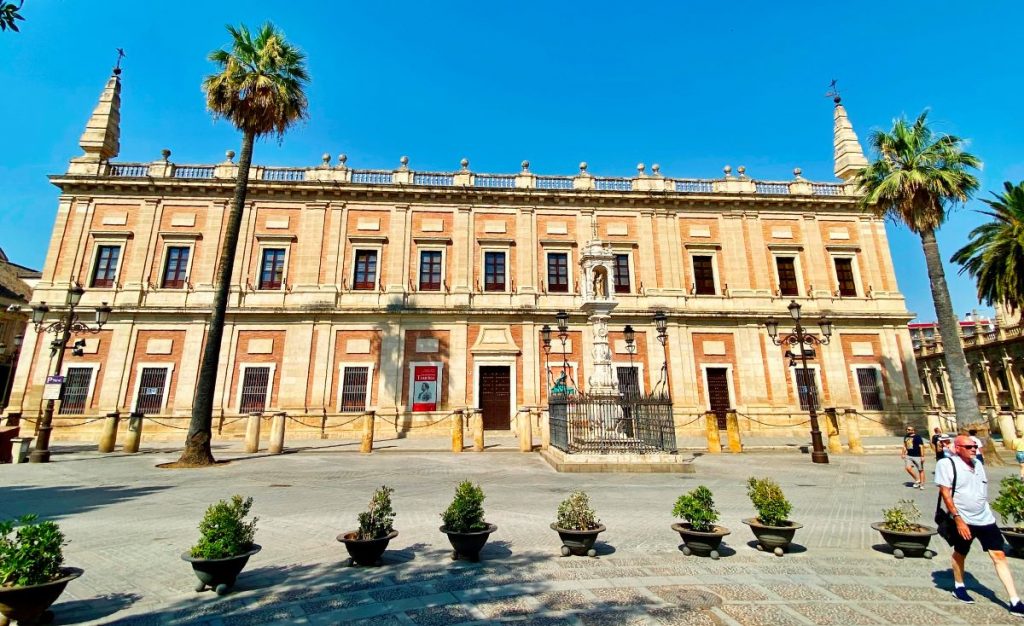
This stunning building dates back to 1645. It is of historical importance as it holds the archive of documents relating to Spain’s overseas territories and the exploration of the New World. Use this as the landmark to turn up Calle Fray Ceferino González and into the Plaza del Triunfo.
This Plaza is the perfect place to take in two of the most important locations in Seville: on one side is the Cathedral and one the other, the Real Alcázar.
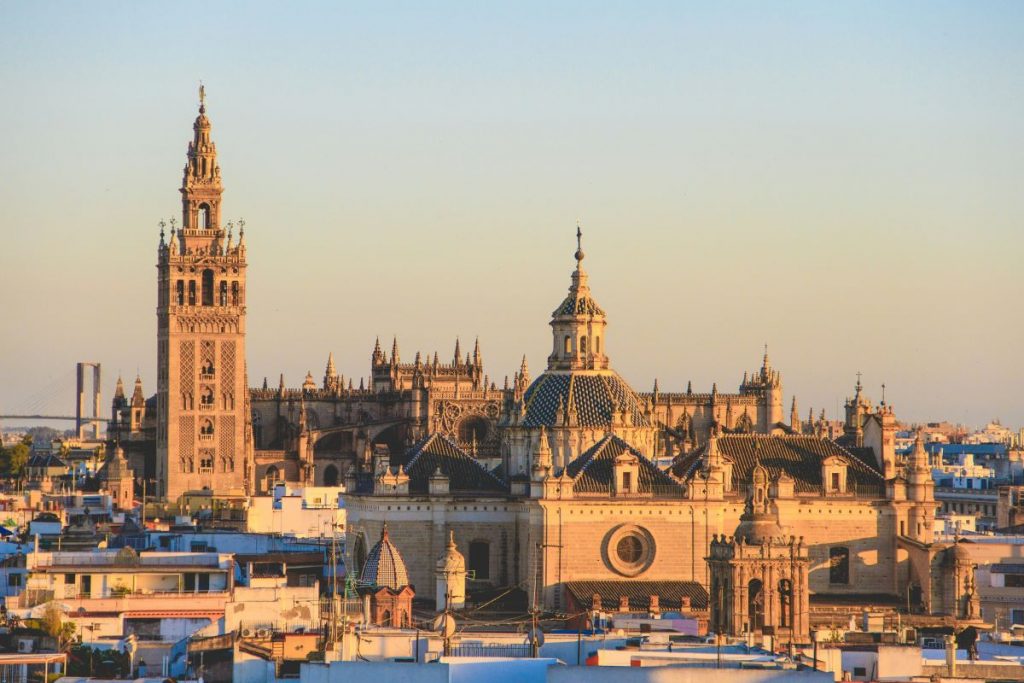
Seville Cathedral
Originally built as a mosque in the 12th Century, it transformed into a Christian Cathedral following the reconquest. It has since been modified and extended many times over the centuries. You can see the tall tower, the unmistakable “La Giralda”, from all over the city. This was once the Minaret of that original mosque, and is now the symbol of the city. Unfortunately, little else remains of the original structure, except for the Patio de los Naranjos, the Patio of Orange trees.
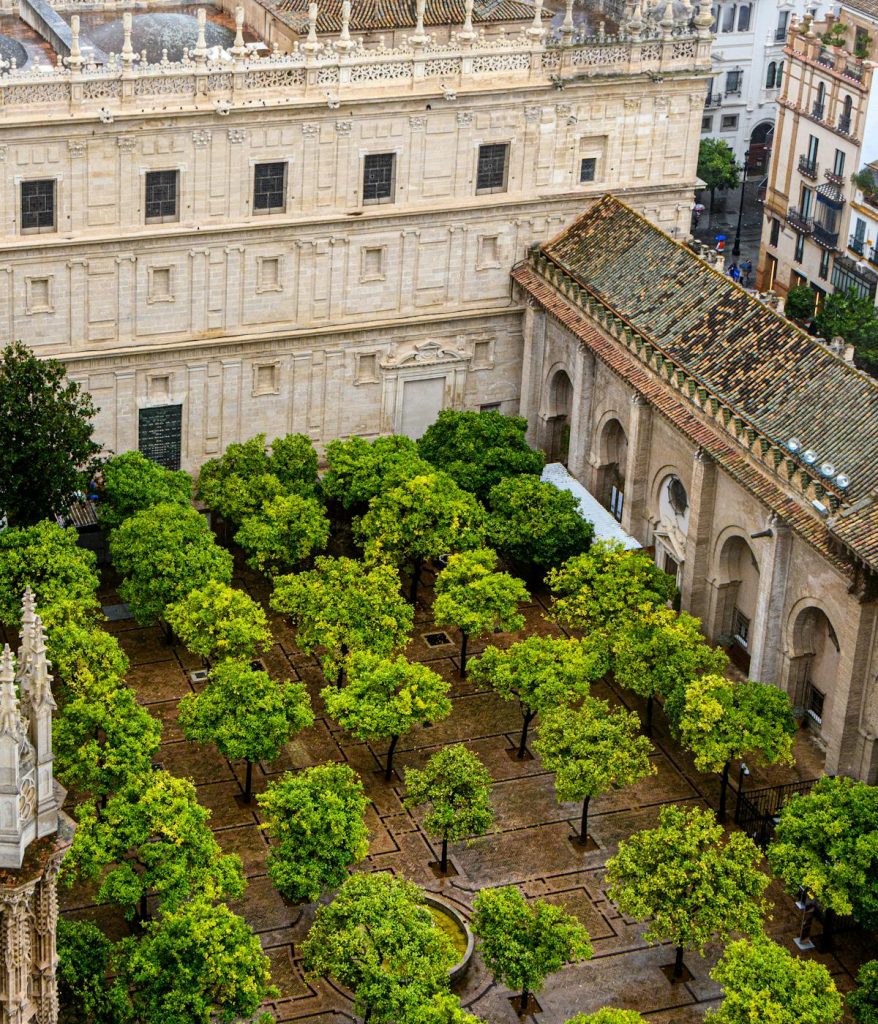
The Real Alcázar
This is a royal palace which dates back to the Islamic era. Filled with centuries of history, it dazzles visitors with its blend of Moorish and Christian architecture. Stopping here on your bike tour offers the perfect chance to rest in its tranquil gardens and soak in the magic of Seville’s past.
Local´s tip: If you’d like to learn more about the Alcázar, and enjoy it´s amazing architecture in a more intimate way, why not beat the queues and join the Alone in the Alcazar tour?
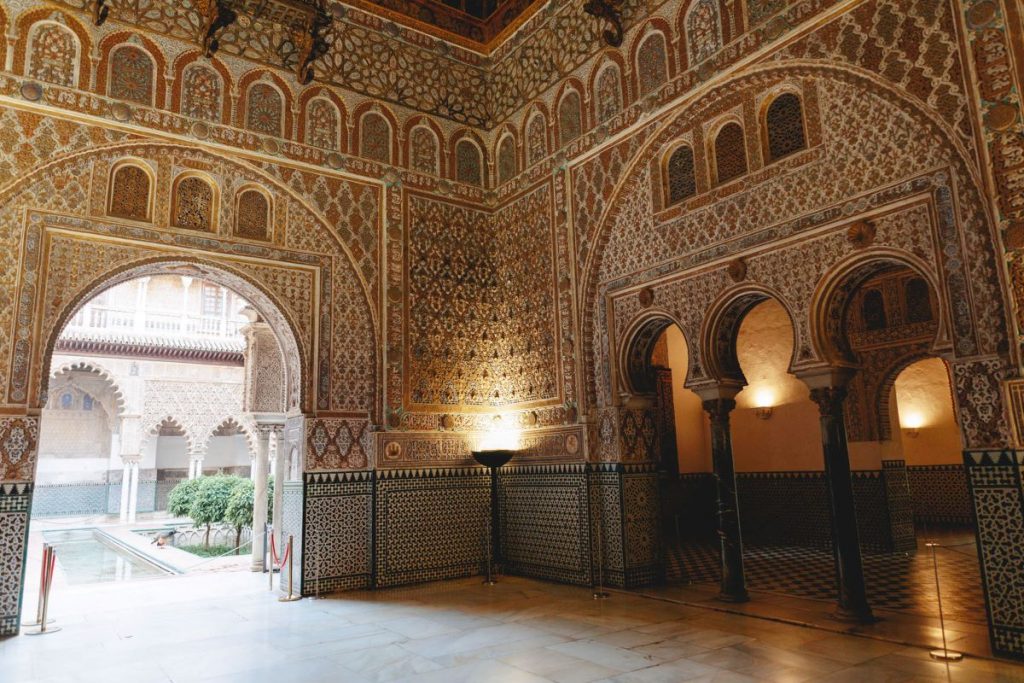
If you are looking for a place to stop for a bite to eat, Mateos Gago, the pedestrian street directly opposite the Giralda is a good place to start. Filled with bars and restaurants, it is a great place to sit back, relax and watch the world go by.
Stop 7: Plaza Nueva
Leave Plaza del Triunfo the same way you entered and continue down Avenida de la Constitución and follow the curve of the road until you reach a large Plaza. This is Plaza Nueva, home to the city´s Ayuntamiento – the town hall.
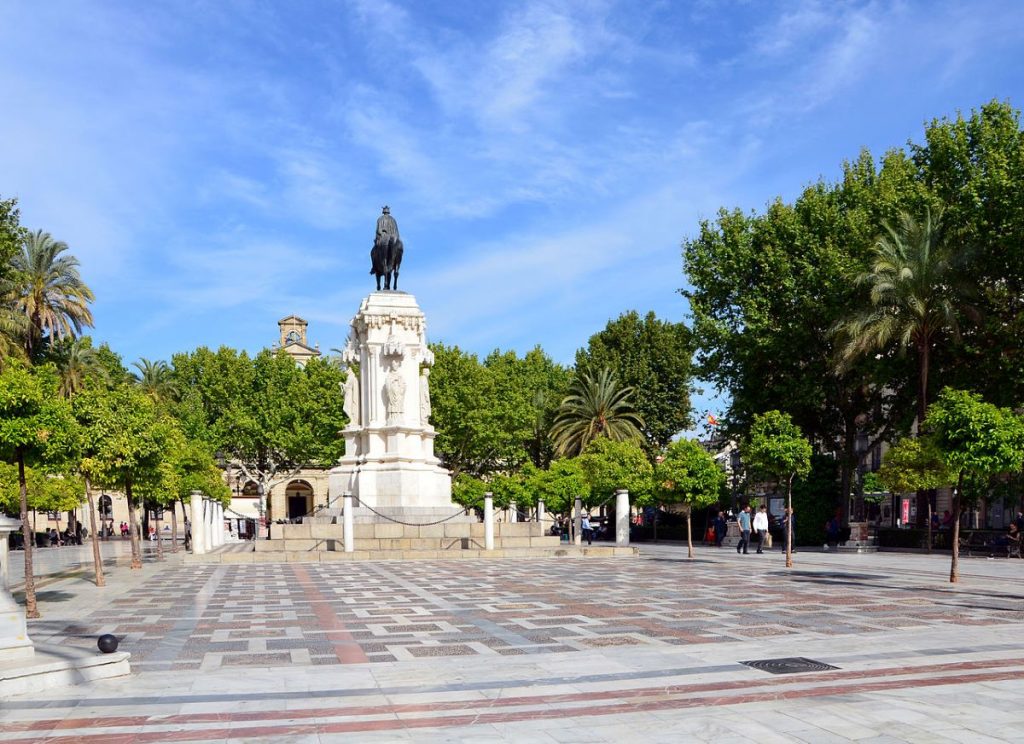
Take a break here under the trees in this surprisingly quiet plaza. Or if you time it right, you can enjoy one of the frequent markets and mini festivals that use it as their home throughout the year.
Local´s tip: From this point on, there are very few cycle lanes in the narrow winding streets of the old town, so the route now follows the one way route of the old town traffic system.
Stop 8: Plaza del Museo
Leave Plaza Nueva via Calle Menendez Nuñez, which runs on the far side of the Plaza by Hotel Inglaterra. Continue to the end where you will see the small square of Plaza de la Magdalena. Turn left onto Calle San Pablo, then right onto Calle Bailén.
Follow this street until you reach Calle Miguel de Cavajal on the right. This street will open onto Plaza del Museo, Home to the Fine Arts Museum (Museo de Bellas Artes).
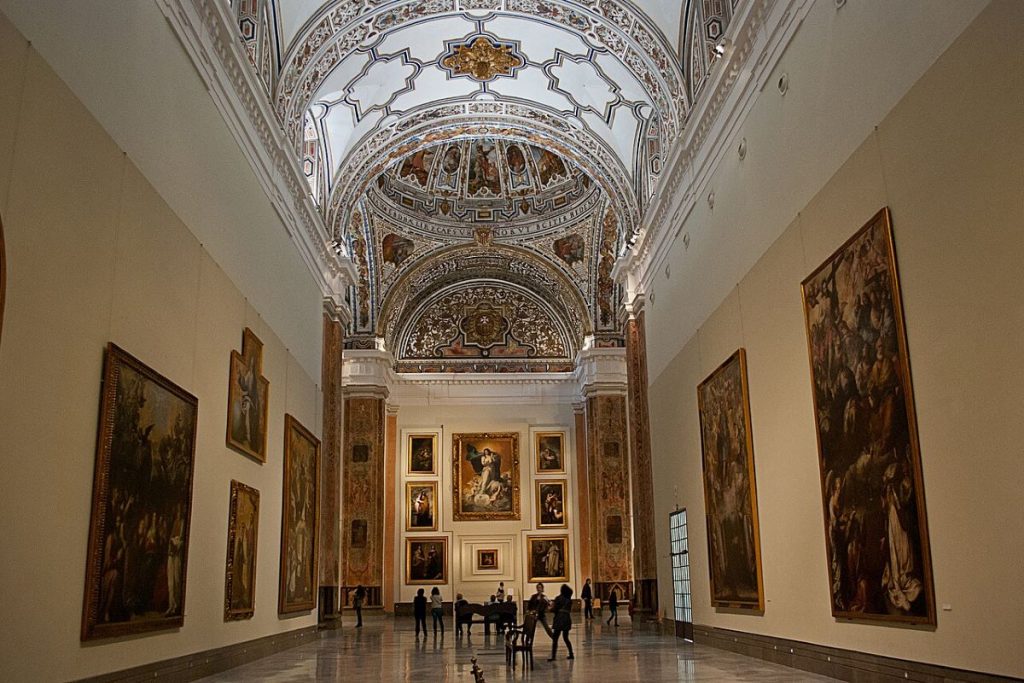
This Museum is an essential stop for any art lover and is one of Spain’s most important art galleries. Housed in a beautifully restored former convent dating back to the 13th century, the original building was rebuilt in the 17th century in a stunning Baroque style. It is now home to artworks by the great painters such as Velazquez and Murillo, amongst many others.
Local’s tip: Come by on a Sunday morning to visit the art market. A great place to see and buy works by local artists for the most unique souvenir from the city.
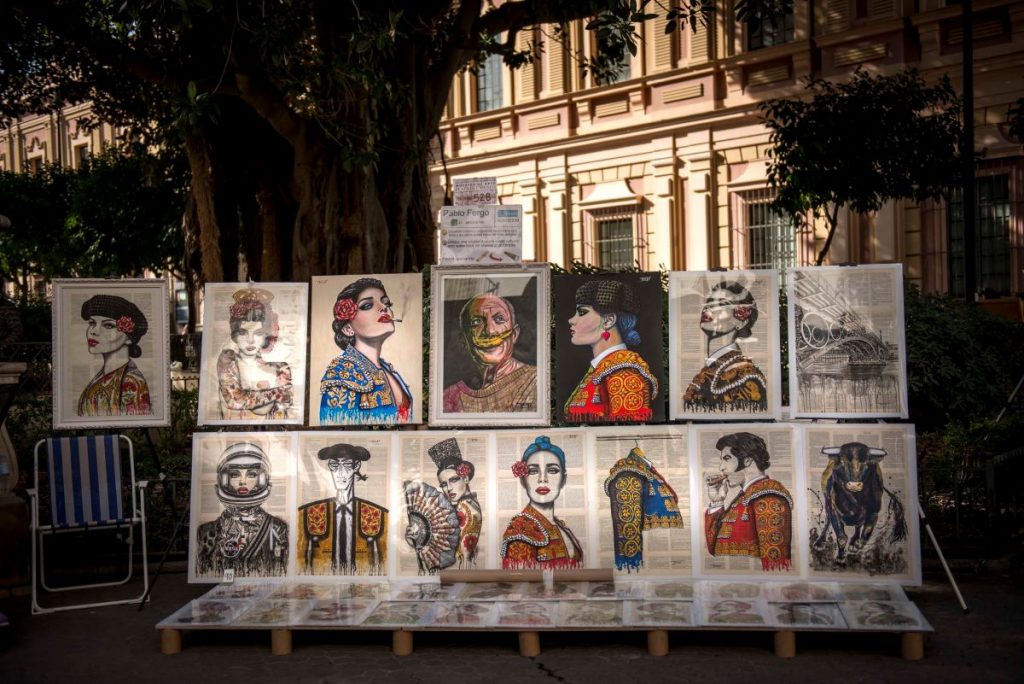
Stop 9: Las Setas
After immersing yourself in the local art, you can pass straight in front of the museum and cross the road to enter Calle San Vincente. Then, take the first right onto Calle Cardenal Cisneros. Continue on as the road turns into Calle Virgen de los Buenos Libros and then into Calle Teniente Borges. At the end, take a right, then another right to arrive at Plaza del Duque.
This plaza features a statue of Velazquez at its center. Continue around the plaza and enter Calle Campana.
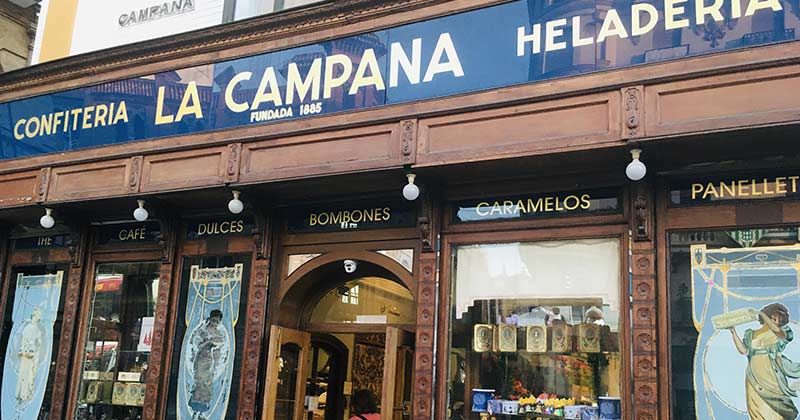
Local’s tip: If you have a sweet tooth, and fancy a tasty treat on your Seville bike tour, look no further than La Campana. Still in its original spot, it has become a mainstay of the city. Although in recent years they have expanded and opened other locations, the original cannot be missed. It features on our tastes, tapas, and traditions tour.
Now you have a sugar rush to give you more pedal-power, keep going and the great expanse of the Metropol de Sevilla, known locally as las Setas, the mushrooms, can be seen.
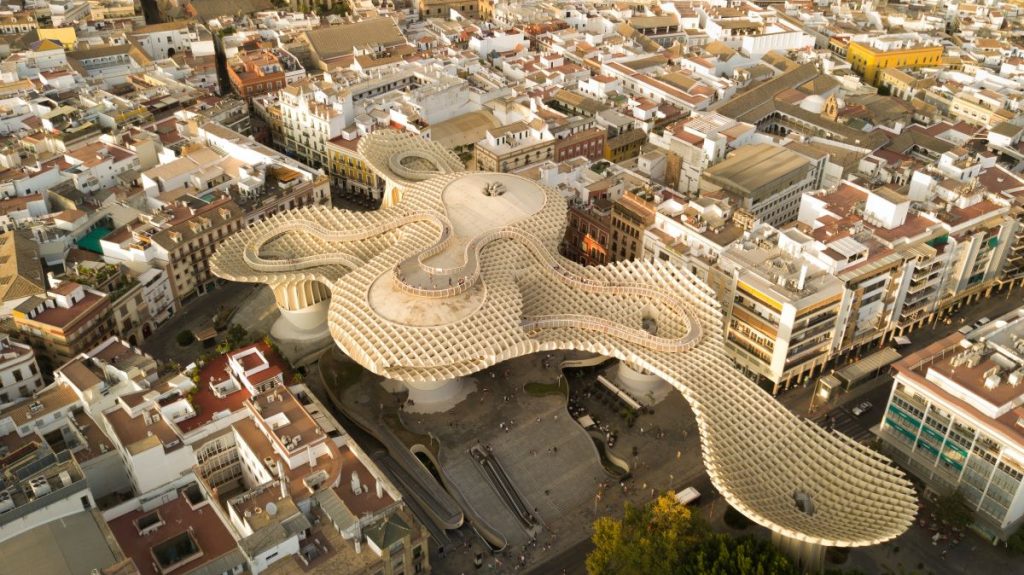
Looking at the full structure, it is easy to see how it gained its nickname. Head to the top for uninterrupted panoramic views of the city, or go under the structure to see some of the archaeological remains of the ancient city.
Stop 10: Alameda de Hercules
Head back down Calle Laraña and take the second right onto Calle Orifa and continue straight past San Andrés church. Turn left at the end, then right onto Amor de Dios. At the end of this street, You will see the Alameda de Hercules.
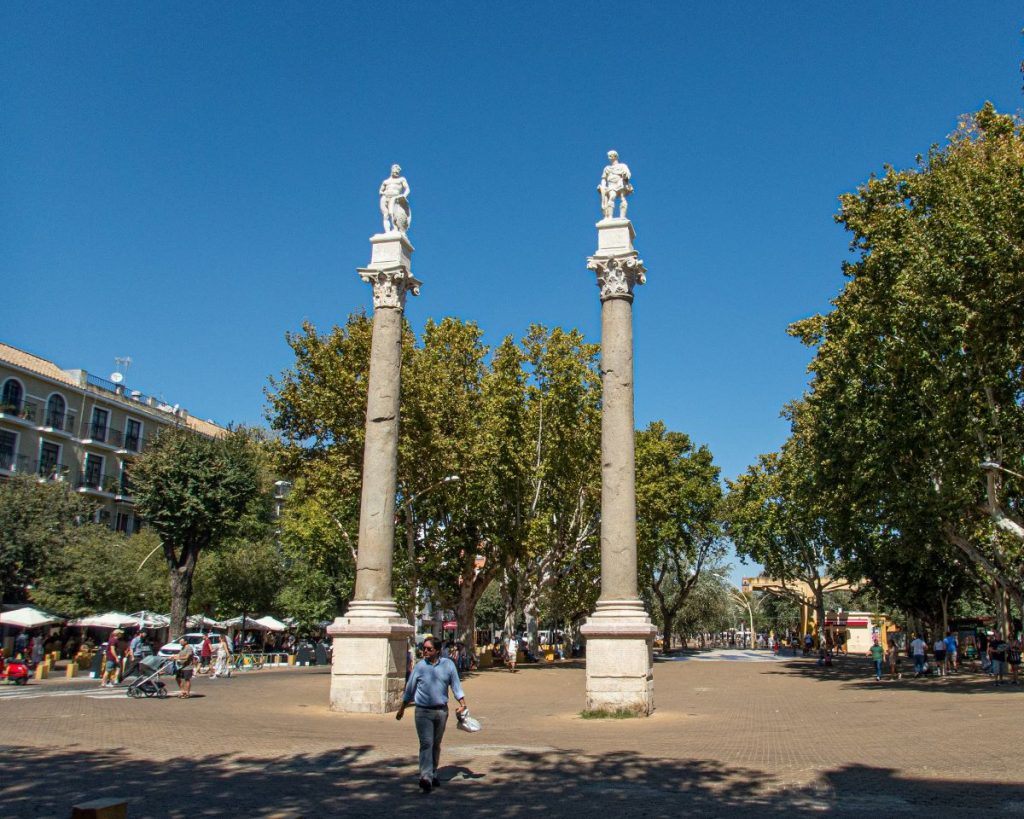
This is bustling and lively at all times of the day, and is the heart of Seville nightlife. This great promenade, marked at each end by Roman columns, is filled with bars, restaurants and clubs.
Stop 11: Feria Market
Leave the Alameda near where you entered it onto Amor de Dios again and follow the road up to the crossroads. Head straight on and the road becomes Correduría and turn left onto Calle Feria.
This neighborhood is full of independent shops and has a bohemian feel. Continue on Calle Feria and you will come to Feria market. This is the perfect place to try a variety of tapas within the market itself, Or you can go to some incredible bars and restaurants around the edge which use the amazing fresh ingredients from the market.
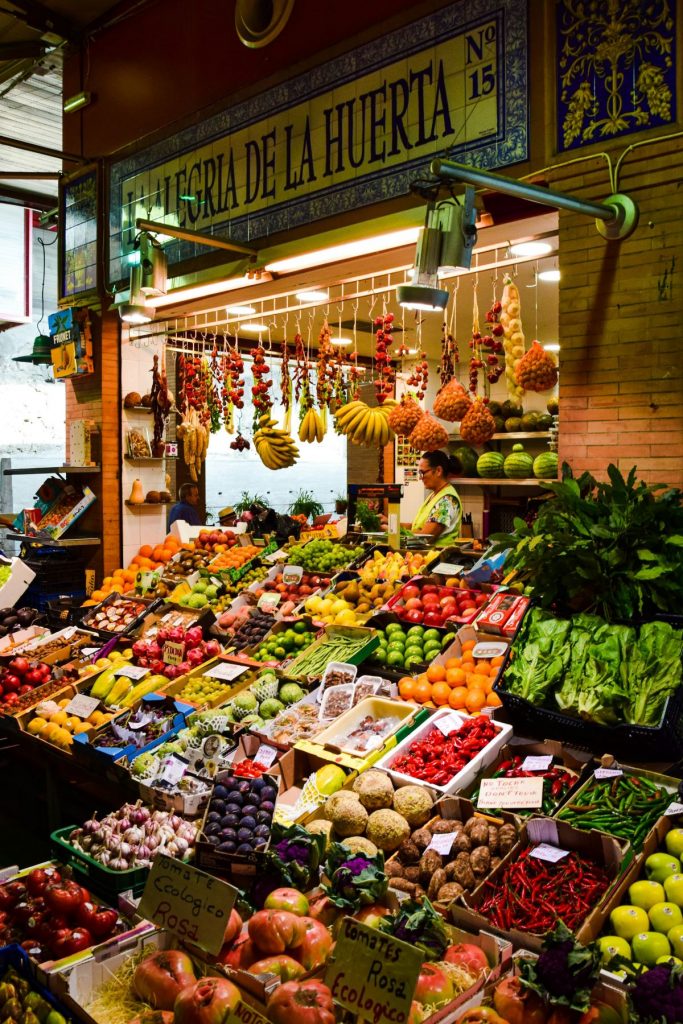
Final stop: Arco de Macarena
Head to the end of the street where Calle Feria meets the road that rings the old city. Here we join the city’s bike lane network once more. Turn right onto Calle Resolana until you reach the Macarena Arch.
The Arch was one of the most important entrance points to the city and has had a lot of restorations since its original construction in the 12th Century. Next to the Arch, there is the Hermandad de la Macarena, whose Virgin, la Virgen de la Macarena, is one of the most revered in the city.
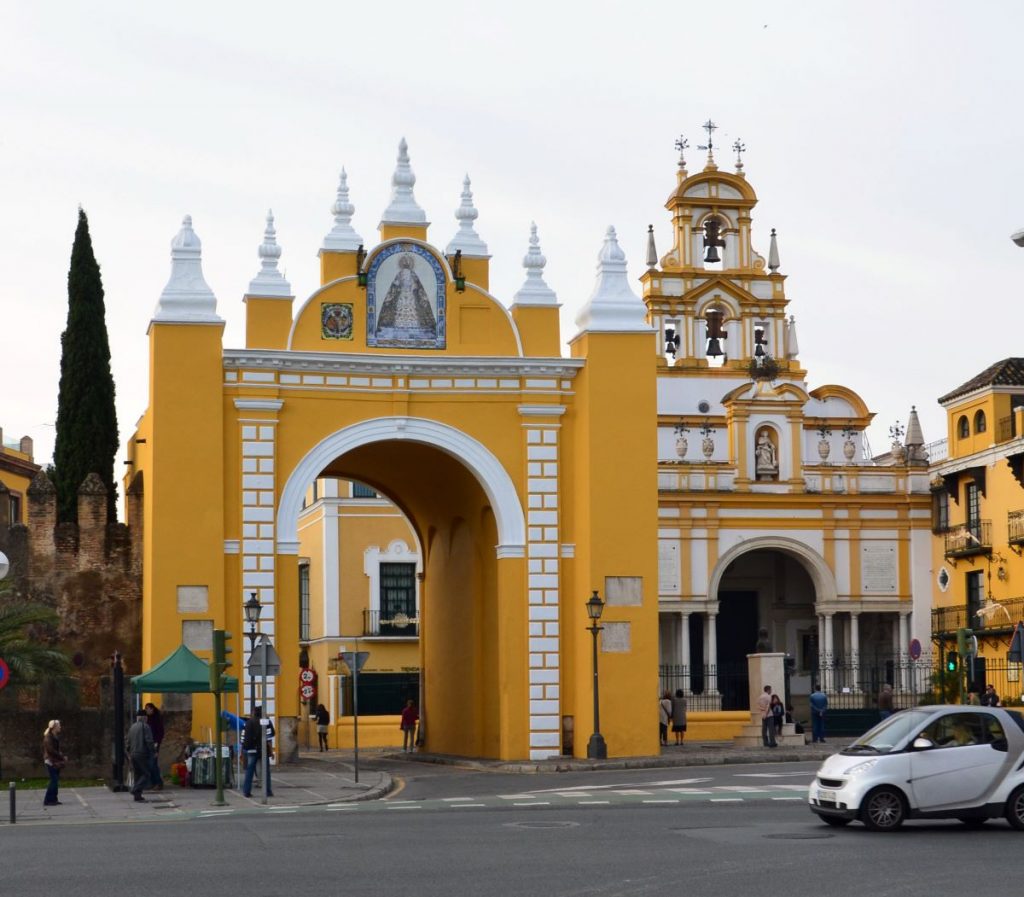
This is where the self guided Seville by bike tour ends.
FAQs – Bike Tour of Seville
How long does the bike tour last?
The bike tours of Seville is approximately 11.5km (approximately 7 miles), so allowing half a day to a full day will give you plenty of time to explore the city’s main sights at a relaxed pace, depending on whether you decide to go inside the museums or just enjoy them from the outside.
Is there a map of the route?
A map of the route can be found here https://www.plotaroute.com/route/2596647
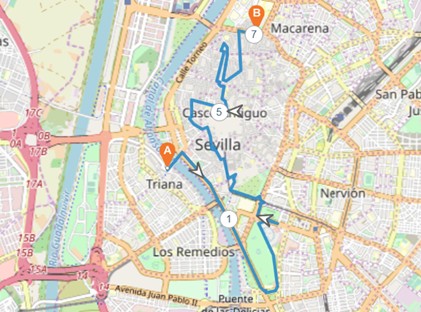
Do I need to be an experienced cyclist?
Not at all! Seville is one of Europe’s most bike-friendly cities, with flat terrain and safe cycle lanes, making it perfect for beginners and casual riders.
Is it compulsory to wear a helmet?
We would recommend to err on the side of caution and to always wear a helmet when cycling. In Seville, within the city limits, wearing a helmet is recommended for adults, but generally not required by national law. However, helmets are mandatory for all cyclists under the age of 16 on all roads.
Explore Seville Your Way!
Glide through Seville’s streets and plazas at your own pace, by bike or on foot, or dive deeper with one of our expert local guides who’ll bring the city’s legends to life. Choose from 5 different guided tours with Take Walks – from the exclusive early access to the Alcazar tour, to four different themed food tours, which give you a taste of local tapas, taverns, traditions and neighborhoods, by day or by night.
